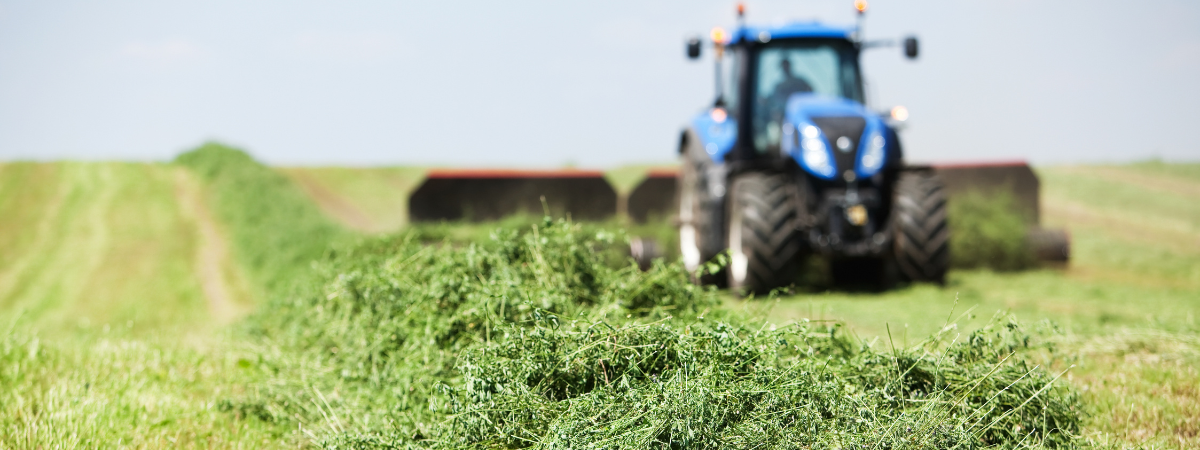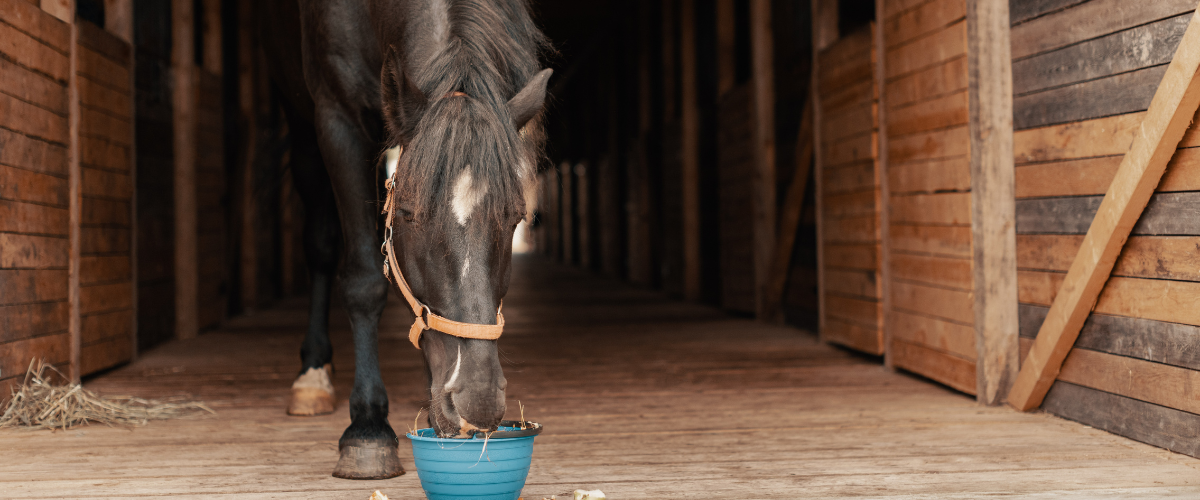Do you know why we feed Alfalfa?
-

- 23 Nov 2022
- 0 Comments

Alfalfa- what is it?
Alfalfa has been used for thousands of years around the world and can also go by the name Lucerne. With an extensive rooting system, the legume crop can access minerals and water deep in the soil, being greatly beneficial for soil structure. Furthermore, planting an alfalfa crop requires no additional fertilisers due to its natural ability to return substantial amounts of nitrogen back into the soil. The crop is maintained in the ground for three to four years, aiding the production of further crops and providing winter cover for wildlife.
So why is Alfalfa so good to feed to our horses?
Alfalfa is a safe and nutritious fibre which is made up of glucose units that are linked together in a unique way. Therefore, the horse relies on microorganisms and bacteria to break down the fibre to release and use the required energy. The amount of energy that a horse can extract from a forage depends on how digestible it is (how easy it is for the micro-organisms in the gut to break down the fibre). Although, alfalfa is a high fibre feed and contributes significantly towards the horse’s energy requirements, the forage is low in starch. Why? This is because the alfalfa plant can store surplus starch in its roots when enough sugar has been photosynthesised. The horse’s do not eat the roots, so they do not intake the remaining starch contents.
Read more: How to feed your horse according to workload
The sugar levels of an alfalfa feed are usually below 5% when an oil coating has been added to the fibre. However, although the sugar is low, the energy levels remain high enough to aid moderate to hard-working horses. Alfa-A Oil is an example of a low starch, low sugar feed that is suitable for a hard-working horse but is also ideal to feed to a laminitis prone equine. Although feeds are rarely entirely sugar free, if you look for ‘no added sugar’, those feeds will be of the lowest containing sugar levels such as Alfa-A Molasses Free.
Read more: What should we be feeding a laminitis prone horse?


Minerals from the soil are absorbed and used differently depending on the type of plant and the initial mineral levels present in the soil. These minerals that are taken up by the plant can be categorised by the amount needed in a diet, trace elements, micro groups, and macro groups.
Alfalfa Macro-minerals
Macro-minerals can be measured as a percentage or in g/kg and can be determined by many factors.
Due to the large rooting system of an alfalfa plant, readily available calcium can be absorbed at greater depths. This allows larger amounts of calcium to be absorbed, and when chopped, can contain 30-50% more calcium than a grass forage. The benefit of an increased calcium intake is that the alfalfa plant can act as a natural buffer to acidity, aiding the horse’s gastric health.
On the other hand, magnesium levels are determined by the age of the plant. As the alfalfa crop ages, the magnesium levels will decline in comparison to the greatest levels that are present at the beginning of the crop’s development stage. Dengie therefore harvests the alfalfa crop before it has matured to ensure the greatest nutritional value can be produced. Moreover, to ensure horses are consuming the maximum nutritional benefits, Dengie adds a liquid coating to the harvested forage after the drying process is complete. This is to reduce the dust created by the breakdown of the leaves; the leaves store the greatest amount of minerals as the plant ages which is why it is important to include these in the feed.
Alfalfa Micro-minerals
Micro-minerals are normally measured in mg/kg and tend to be more deficient in a horse’s diet where the UK pastures lack minerals such as copper and selenium. It is important for a horse to take in micro-minerals, as they are reliable for many functions within the body.
The micro-mineral Cobalt is needed for the synthesis of vitamin B12, an important element for lots of biochemical pathways in the horse’s body. It has been seen to naturally occur in alfalfa plants at lower levels and it is thought to strengthen fibre digestion and therefore performance. However, due to the over supplementation of the mineral by some racehorse trainers to increase a competitive advantage, the inclusion of cobalt in feeds are closely monitored around the world.
Counteracting the shortfall of a mineral can be achieved through supplements or balancers. However, you should remember that although it can impact the horse’s behaviour and health, the over use of a mineral when it is not needed can cause a long-term over-supply or toxicity issue.












